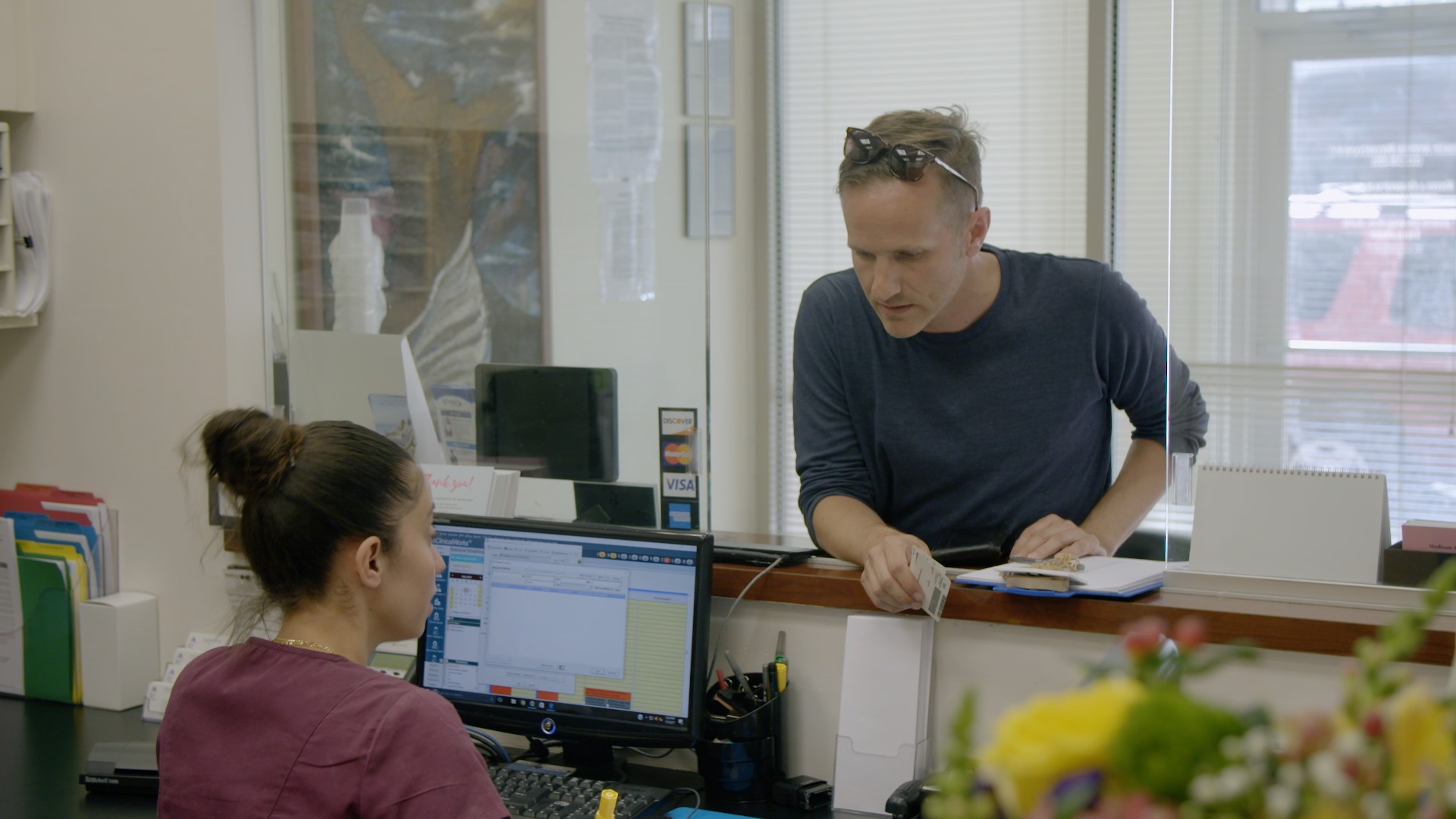Can Periodontal Ligament Repair Itself
Malte Mueller/Getty Images
I thought I'd broken two of my teeth. I was rushing out the door with a mouthful of muesli when I heard—and felt—a big crrruNnch. Information technology felt exactly like it sounded: What else could information technology exist other than cracked teeth, because how many other types of injuries can a little block of calcium endure? But later 2 days, the hurting started to dissipate. Later on some other three, it was totally gone, which wouldn't take happened if I'd exposed a nerve or caused a crevice. It turns out that I'd very likely sprained my tooth—one of the most common and least serious tooth injuries many people have never heard of. "Most people when they come in here say, 'I think I've croaky a tooth or broken something'," says Emerge Cram, a Washington, DC-based dentist. "People don't come in and say 'I retrieve I accept a tooth sprain.' I think if you ask most people what a tooth sprain was, they probably couldn't tell you." "Tooth sprain," it's worth noting, isn't really a clinical term well-nigh dentists use. "Trauma from occlusion" is the technical term for an injury that results from biting, but information technology's also a clumsy 1 to use in normal conversation, and so "tooth sprain" has caught on as a layman'south way of explaining the trivial-known injury. In short, it's an inflammation injury to the ligaments supporting the teeth, and everybody'due south familiar with the idea of spraining the ligaments in a wrist or knee, even though the ligaments in a complicated articulation like the knee joint are much different. "We know it's not the same every bit a sprain in a articulation," Cram says. "The periodontal ligament is very different from the ligaments surrounding the knee joints and hip joints, considering those ligaments are helping to concur one os to another 1."
More than from VICE:

Mounting the tooth into the jaw bone is a rubbery, thin ligament that, when y'all chew, gives way a lilliputian so that the two hard body parts don't bang together. "It'south like a little shock absorber around the whole root of the tooth," Cram says. When you bite downward too hard on something and the force is too great for the ligament to blot, information technology can exist stretched, broken, or crushed, says Phillip Richards, a dentist and professor at the Academy of Michigan Schoolhouse of Dentistry. Because the inflamed ligament has nowhere to expand into—merely difficult bone to one side and hard tooth on the other—it can exist incredibly painful. Injuries around teeth are more than localized, cocky-contained, and hidden, Richards says, and that makes them difficult to diagnose. Then because very few people accept heard of molar sprains, it's reasonable for somebody to bite downwards on a slice of gristle or a seed, feel a sharp pain, and assume they've cracked a molar. How do you tell a sprain from a cracked tooth, exposed nerve, or decay? The first stride is mostly to wait it out. "Typically, if it'southward juts a trivial pinching of that ligament, it's going to cocky-resolve itself in three to five days," Cram says. Cracks, exposed nerves, and decay don't heal on their own, then if a few days' remainder soothes your molar, it was probable simply a sprain. In the meantime, stick an ice pack confronting your confront well-nigh the tooth, avoid hard food and chewing gum, and take an anti-inflammatory painkiller such as ibuprofen, Richards says. If the pain sticks around longer than five days, get to a dentist. It doesn't dominion out a sprain, because y'all might just be continually hurting information technology and not allowing information technology to heal, but it may be something more serious or more chronic.
"It could be any trauma to a tooth that'd cause a molar sprain," Cram says, adding that it'south non e'er caused past biting down on something hard. Grinding your teeth at dark, clenching your jaw during the twenty-four hour period, and biting your nails can traumatize tooth ligaments, and having a misaligned seize with teeth pattern can also make you more susceptible to recurring ligament injuries, she says. Chronic inflammation is more serious and can lead to glue recession and loss of bone around the tooth'due south root over the long-term, Cram says. Tooth ligaments aren't built to take constant low-level penalization whatever more than a unmarried loftier-impact trauma. If you keep getting tooth sprains, get see a dentist, who may correct your bite pattern or requite you lot a seize with teeth baby-sit to wear at night. The good news is that molar sprains are typically pocket-sized, and an isolated incident won't pb to everlasting harm, Cram says. Biting downward on a chicken bone or a seed, or having a too-loftier filling or crown that leads to a sprain won't probable be hard plenty to permanently injure a tooth's ligaments. The supportive tissues around teeth accept a high capacity for healing, Richards says, so it may hurt for a while, only equally long equally you lot accept upwards a temporary diet of mush to give your molar some residual, it should heal fine. The next fourth dimension y'all crunch into something and feel a pang, wait it out a few days if the pain is endurable. You just might save yourself half an afternoon—and an expensive trip to the dentist. Sign up for our newsletter to go the best of Tonic delivered to your inbox.
Source: https://www.vice.com/en/article/a3qgb5/cracked-tooth-tooth-sprain
Posted by: martinrivinquister52.blogspot.com


0 Response to "Can Periodontal Ligament Repair Itself"
Post a Comment